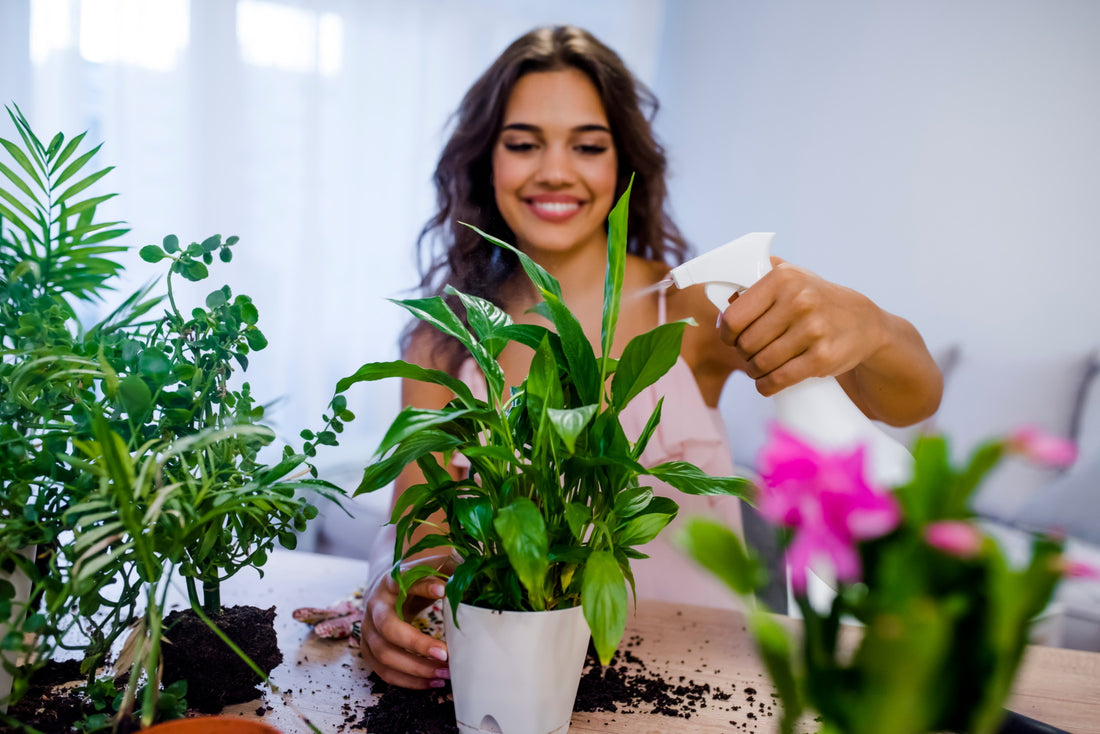It's not a surprise to anyone that plants need good care and attention to thrive. But some know-how and know-what is useful for those who would like their plants to last a long time. Whether your plants are in the office, at home or in any other indoor environment, the challenges can be similar — especially if you want the place to look good. That's why we've come up with solutions to some common plant problems.
The leaves have turned yellow!
This is one of the most common indoor plant problems. Your plant could be getting too little light or too much water—or possibly both! If you've recently moved your plant from one room to another and the leaves turn yellow shortly thereafter, this is probably the culprit. If your plant is getting direct sunlight every day but still has yellow leaves, give it more water. And if your plant isn't getting any direct sunlight at all and still has yellow leaves? Move it closer to a window!
Your plant is looking droopy and dying
The leaves are limp, but the stems are still firm. If this is happening to your plant, it probably just needs some water. Check the soil—if it feels dry all the way down, then give it some water. If there's still moisture in the soil, make sure you're watering deeply enough so that you don't just wet the top layer of soil.
Brown Spots on Leaves
Brown patches on leaves are a common problem for gardeners, but they're not always easy to diagnose. There are many different causes, and the solution can vary depending on what's causing your brown spots.
Here are some of the most common causes of brown patches on leaves:
Lack Of Nutrients
When your plants are lacking nutrients, they will start showing symptoms such as small holes in the leaves or brown patches on the leaves. The brown patches on your plant’s leaves may be caused by a mineral deficiency or salt build up in the soil. To fix this problem, you should add more fertilizer to your garden. If the brown patches continue after adding fertilizer, it could mean that there is something wrong with your soil such as an alkaline pH level or too much salt build up in your soil.
Insects and mites
Aphids, thrips, mites and other pests can cause brown spots on leaves. Some types of mites leave a fine webbing over the leaves as well.
Overfertilizer
Too much nitrogen in the soil causes browning on leaf edges and tips of new growths. To prevent this from happening, use slow-release fertilizer pellets instead of liquid fertilizer every two weeks during active growth periods (spring and summer).
Humidity
Brown patches on leaves are caused by high humidity and poor air circulation. Humidity is the amount of water vapor in the air. If you live in a humid climate, it's important to provide good air circulation so that your plants don't get too much moisture from the air around them.
Common Indoor Plant Problems
If you want to keep your indoor plants healthy and happy, it's important to be aware of the common problems that can affect them. Below are some of them:
Too Much Sunlight
If a plant is getting too much sunlight, it will die from dehydration and heat stress very quickly. Try moving your plant away from any window where it gets direct sunlight for most of the day (this includes south-facing windows!) And make sure to water your plants every week during summer months when temperatures soar above 75 degrees Fahrenheit outside!
Root Rot
Root rot is one of the most common problems with indoor plants. The soil in which they are growing does not drain well enough, so water sits next to the roots for too long. This causes root rot as well as other issues such as fungus and mold growth on leaves or stems. To prevent this problem, make sure your plants have drainage holes in their pots and that you are watering them at least once per week (preferably more).
Not Enough Water
Plants need water to survive. If they are not getting enough water, they will wilt, turn brown, and eventually die. The signs of a plant that needs more water include leaves that are limp or discolored and stems that are soft or mushy.
Common pests
Pests are one of the most common problems in houseplants because they're generally small enough to hide in crevices or underneath leaves where you won't see them until they've done some damage to your plant. A few common pests include spider mites, Aphids and mealybugs (which look like fuzzy white cotton balls). Most pests can be removed using pesticide sprays from a garden center or pet store, but be sure to read the instructions carefully and follow them exactly so that you don't damage your plants further!

